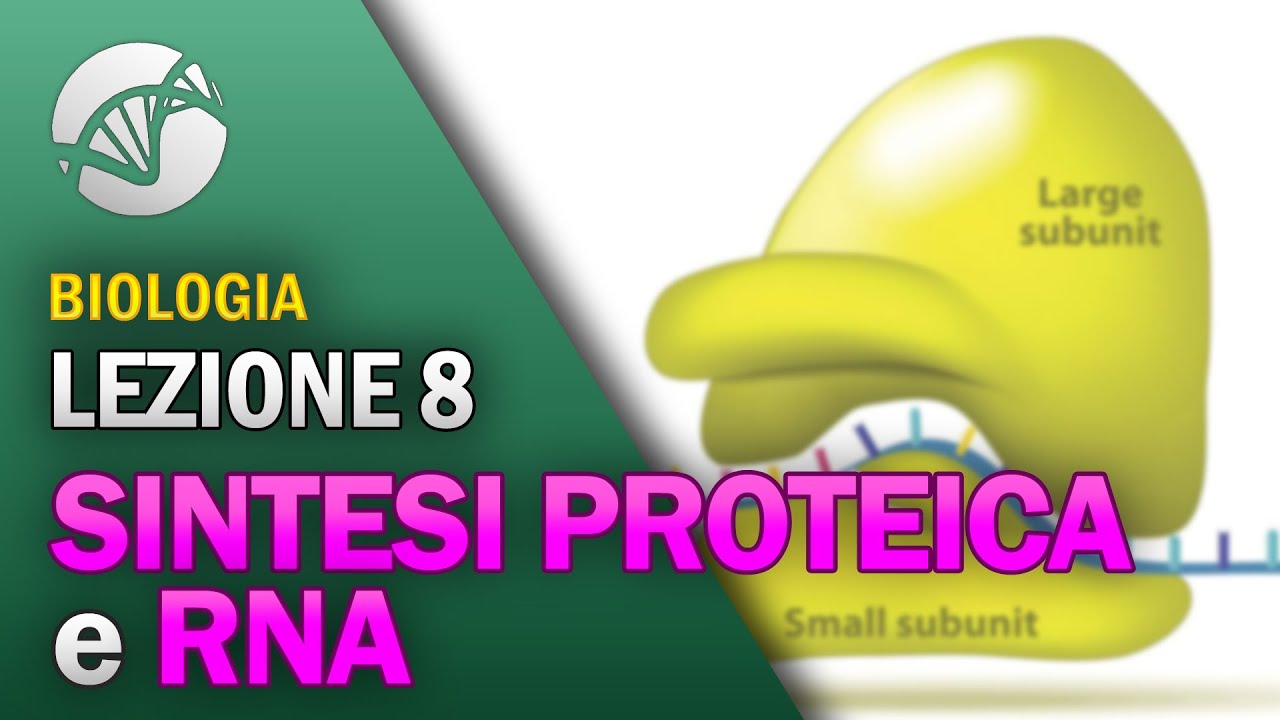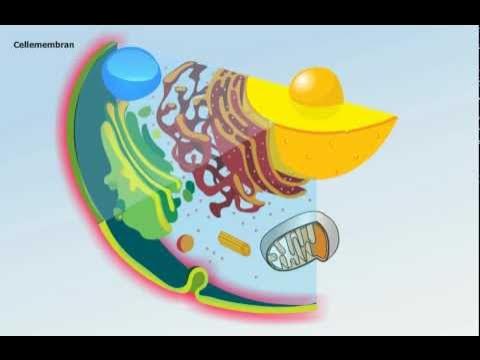Ribosome Function and Structure
Summary
TLDRThe video explains the role of ribosomes in protein synthesis within cells. It describes ribosomes as ribonucleoprotein particles found in both prokaryotic and eukaryotic cells, with differences in structure and sedimentation coefficients. Ribosomes are composed of ribosomal RNA and proteins, and they function by translating genetic information from messenger RNA to form proteins. The video also covers the concept of polysomes, where multiple ribosomes work on a single mRNA strand to produce many copies of a protein simultaneously. It emphasizes ribosomes as the essential machinery for protein synthesis in all living cells.
Takeaways
- 😀 Ribosomes are essential for protein synthesis in both eukaryotic and prokaryotic cells.
- 😀 Ribosomes were discovered by Robinson and Brown in 1953 for animal cells and by Palade in 1955 for plant cells.
- 😀 Ribosomes can be found in the cytoplasm or attached to cellular membranes, such as the rough endoplasmic reticulum and the nuclear membrane.
- 😀 Ribosomes consist of two subunits: a larger subunit and a smaller subunit, which come together during protein synthesis.
- 😀 The sedimentation coefficient of ribosomal subunits varies: 50s and 30s for prokaryotes, 60s and 40s for eukaryotes, and 70s in mitochondria and chloroplasts.
- 😀 The sedimentation coefficient values (e.g., 70s and 80s) reflect the relative size and mass of the ribosomal subunits when combined.
- 😀 Ribosomes are made up of ribosomal RNA (rRNA) and proteins, with the rRNA playing a crucial role in both the structure and enzymatic functions of the ribosome.
- 😀 Ribosomes have three primary sites: the aminoacyl (A) site, the peptidyl (P) site, and the exit (E) site, which are involved in protein synthesis.
- 😀 Ribosomes can occur individually or in clusters called polysomes, where multiple ribosomes translate the same messenger RNA simultaneously.
- 😀 The polysome structure helps in the efficient synthesis of large amounts of the same protein by translating the same mRNA multiple times.
- 😀 Ribosomes are regarded as the protein synthesizing machinery of the cell, responsible for translating genetic code from messenger RNA into proteins.
Q & A
What are ribosomes and what is their role in the cell?
-Ribosomes are ribonucleoprotein particles composed of RNA and proteins. They are responsible for synthesizing proteins by reading the genetic code present in the messenger RNA (mRNA).
Where are ribosomes found in eukaryotic and prokaryotic cells?
-Ribosomes are found in both eukaryotic and prokaryotic cells. In prokaryotic cells, they float freely in the cytoplasm, whereas in eukaryotic cells, they are present both freely in the cytoplasm and attached to the endoplasmic reticulum or nuclear membrane.
Who discovered ribosomes and when?
-Ribosomes were first discovered by Robinson and Brown in 1953 in animal cells and by Palade in 1955 in plant cells.
What is the difference in ribosome structure between prokaryotes and eukaryotes?
-In prokaryotic cells, ribosomes consist of a 50S larger subunit and a 30S smaller subunit, while in eukaryotic cells, the larger subunit is 60S and the smaller subunit is 40S.
What does the term 'sedimentation coefficient' refer to in relation to ribosomes?
-The sedimentation coefficient refers to the rate at which ribosomal subunits sediment during centrifugation. It reflects the size and mass of the subunits. For prokaryotes, the whole ribosome sediments at 70S, and in eukaryotes, it sediments at 80S.
What is the significance of ribosomal RNA (rRNA) in ribosomes?
-Ribosomal RNA (rRNA) forms the structural core of ribosomes and also has catalytic activity. It helps in the protein synthesis process by facilitating the formation of peptide bonds between amino acids.
What are the three key sites in the larger subunit of the ribosome?
-The three key sites in the larger subunit are the A-site (aminoacyl site), P-site (peptidyl site), and E-site (exit site). These sites are crucial for the process of protein synthesis and the transfer of amino acids.
What happens during the formation of a polysome or polyribosome?
-A polysome or polyribosome forms when multiple ribosomes simultaneously translate the same mRNA molecule, creating a chain-like structure. This process allows for the efficient synthesis of many copies of the same protein.
What type of ribosomes are found in mitochondria and chloroplasts?
-Mitochondria and chloroplasts have ribosomes that are similar to those in prokaryotes, with a sedimentation coefficient of 70S.
Why do we find polysomes in certain types of cells?
-Polysomes are found in cells where the same protein is being synthesized in large quantities. This is common in cells that require rapid protein production, such as in secretory cells or cells involved in active metabolic processes.
Outlines

This section is available to paid users only. Please upgrade to access this part.
Upgrade NowMindmap

This section is available to paid users only. Please upgrade to access this part.
Upgrade NowKeywords

This section is available to paid users only. Please upgrade to access this part.
Upgrade NowHighlights

This section is available to paid users only. Please upgrade to access this part.
Upgrade NowTranscripts

This section is available to paid users only. Please upgrade to access this part.
Upgrade NowBrowse More Related Video

Ribosomes (Protein Making Factory) Structure and Function of Ribosomes (Detailed Series)

The Endoplasmic Reticulum - The transportation system of the cell

BIOLOGIA - Lezione 8 - Sintesi Proteica e RNA

G11S LH En Bio Organelles of the Cell Video1 20 21

Eukaryote celler

Biologi Part 3; Struktur & Fungsi Sel
5.0 / 5 (0 votes)